1. Telegraph Companies
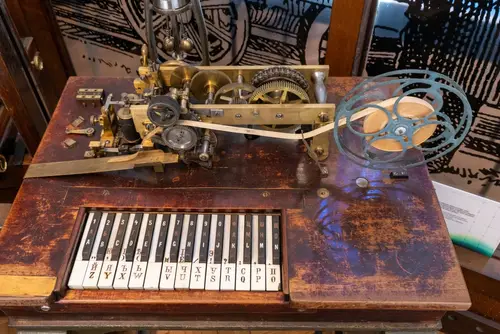
In the 19th century, telegraph companies like Western Union built the first global communication network. They shrunk continents down to seconds and made real-time messaging possible for the first time in history. Ironically, that same innovation paved the way for the technologies that would replace it. The telephone, and later the internet, turned the once-essential telegraph into an antique curiosity.
Telegraphy taught the world how to send information instantly—but the world quickly moved on. The infrastructure and expertise that made the telegraph thrive were repurposed for newer, faster systems. Western Union sent its last telegram in 2006, closing a chapter on an industry that literally wired the modern age. Its downfall shows how even the most revolutionary tools can become irrelevant once the next leap arrives.
2. Film Photography
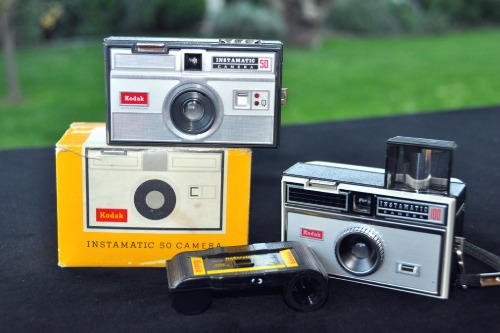
Film photography gave humanity the ability to capture time—moments, memories, and history itself. Kodak practically owned that experience for much of the 20th century. Ironically, Kodak also invented the first digital camera in 1975 but shelved it, fearing it would threaten its film business. It did—just not in the way they planned.
When digital photography went mainstream in the 2000s, film sales collapsed almost overnight. Suddenly, people didn’t have to buy rolls, wait for developing, or even print at all. Kodak filed for bankruptcy in 2012, brought down by the very technology it pioneered. The digital image killed its own ancestor.
3. Horse Carriage Makers

Before cars, the carriage industry was booming—tens of thousands of makers, wheelwrights, and stable hands made cities move. Then along came the automobile, a curiosity that carriage makers initially dismissed. Companies like Studebaker actually made the leap from carriages to cars but couldn’t outlast the competition. Most others simply vanished, unable to adapt to the combustion engine era.
The shift wasn’t gradual—it was seismic. Within two decades, horse-drawn transport went from dominant to obsolete. Roads were repaved for rubber tires, not hooves. The very companies that made transportation possible were trampled by their own innovation’s next evolution.
4. Typewriter Manufacturers

For a century, typewriters were the symbol of productivity—the laptop of their time. Companies like Remington and Underwood built empires on metal keys and ink ribbons. But when the personal computer came along, the typewriter’s charm turned quaint almost instantly. The very idea of typing without paper seemed absurd—until it wasn’t.
By the 1990s, offices no longer clattered with the sound of metal arms striking paper. Word processors made editing effortless and printing optional. Typewriter sales plummeted to near zero, and most manufacturers pivoted or closed. The typewriter had mechanized writing, but computers liberated it.
5. Video Rental Stores
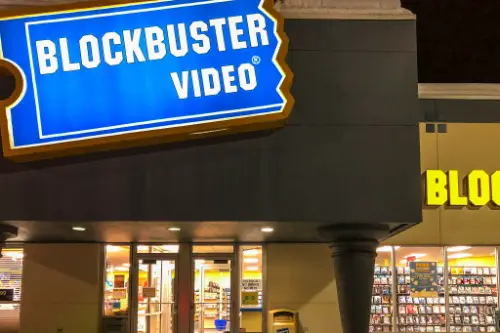
The VHS and DVD rental industry was the cornerstone of home entertainment for decades. Blockbuster, at its peak, ran over 9,000 stores worldwide. But when Netflix shifted from mailing DVDs to streaming, it rewrote how people consumed movies. Blockbuster’s leadership actually had a chance to buy Netflix—and laughed them out of the room.
Streaming killed the weekend ritual of “renting a movie.” People didn’t need to drive, rewind tapes, or pay late fees anymore. By 2014, Blockbuster’s last corporate-owned stores had shuttered. The company that democratized home movies was destroyed by the very convenience it helped popularize.
6. Compact Disc Manufacturers

The CD revolutionized how people listened to music—cleaner sound, more storage, and easy skipping through tracks. For years, it was the symbol of technological progress in entertainment. But the MP3—and later streaming—changed everything. Suddenly, owning music on plastic felt old-fashioned.
Record companies fought digital formats instead of embracing them. Piracy exploded, iPods soared, and CD sales tanked. By the 2010s, the industry that once sold billions of discs was reduced to niche collectors and nostalgia. Music went from physical to invisible, and CDs got left behind.
7. Travel Agencies

For decades, travel agents were the gatekeepers of adventure. They held all the flight data, hotel deals, and tour information the public couldn’t access. Then came the internet—and websites like Expedia and Booking.com made trip planning as easy as clicking a few boxes. Suddenly, everyone became their own travel agent.
Brick-and-mortar agencies couldn’t compete with the convenience of 24/7 online booking. Airlines and hotels went direct-to-consumer, cutting out the middleman. Many agencies either went boutique or went bust. The digital platforms they inspired ended up swallowing their entire market.
8. Newspaper Classifieds

Newspapers once made a fortune on tiny text ads—the original marketplace for jobs, cars, and used furniture. Then Craigslist appeared in the mid-1990s, offering the same thing for free. It didn’t seem like much at first, but the impact was devastating. Classified revenue collapsed, taking a major profit pillar of journalism with it.
The irony? Newspapers had built trust and local reach—the very things that made online classifieds thrive. But they failed to adapt that power to the web. Many local papers never recovered, not from a lack of readers, but from the loss of those lucrative listings. Craigslist didn’t just digitize classifieds—it detonated them.
9. Mapmakers and Atlas Publishers

Paper maps once represented human mastery over geography. Companies like Rand McNally dominated travel and education for generations. But GPS and smartphone navigation changed that overnight. No one needed to fold a map when their phone told them exactly where to go.
Map publishers tried to digitize, but Google Maps and Waze offered real-time data no printed chart could match. Sales of atlases and road maps plummeted. By the 2010s, printed maps had become novelty items. The industry that charted the world was undone by a world that charted itself.
10. Payphone Providers

In the pre-cellphone era, payphones were a public utility. You could find them on every corner, in every airport, on every highway. Then mobile phones arrived, and suddenly, carrying your own payphone made more sense. The demand for public phones evaporated almost completely.
Telecom companies stopped maintaining them, and cities began removing booths en masse. By the early 2020s, New York City removed its last public payphone. The device that once symbolized connection became a relic of inconvenience. Payphones helped people stay in touch—until everyone could.
11. Pager Companies

Before texting, pagers were the height of mobile communication. Doctors, executives, and teenagers all relied on those little beepers to stay connected. Motorola led the charge, pioneering wireless messaging. But when mobile phones gained the ability to text, the pager’s purpose vanished.
Within a few years, what was once cutting-edge became a punchline. The pager industry collapsed almost overnight in the early 2000s. Only hospitals and niche services kept them alive a bit longer. In the end, phones didn’t just replace pagers—they absorbed them.
12. Video Game Arcades

Arcades introduced millions to video gaming before consoles ever entered living rooms. For a time, they were cultural landmarks filled with flashing lights and buzzing machines. But when consoles like the PlayStation and Xbox delivered the same experience at home, the crowds stopped coming. The magic of the arcade cabinet faded fast.
Some survived by going retro or focusing on social nightlife, but the golden age was over. Arcades had birthed the gaming industry—and were then buried by it. The joystick gave way to the controller. The future they invented simply moved into people’s homes.
13. Cable Television Providers
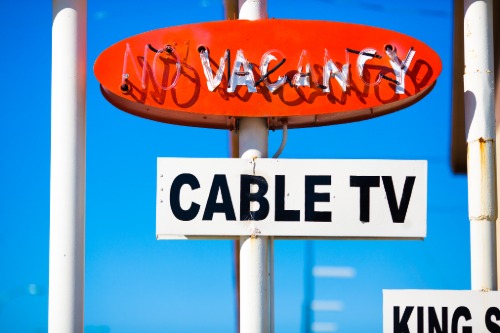
Cable TV once defined entertainment, bundling hundreds of channels for millions of households. It even helped shape pop culture with original programming and 24-hour news. But streaming platforms unbundled everything—no schedules, no commercials, and no cable box. Viewers fled, and cable companies scrambled to reinvent themselves.
The irony is that cable networks helped create the digital streaming model. HBO became HBO Max; Disney built Disney+. But cord-cutting continues to gut traditional subscriptions. The industry that made TV addictive lost out to a version of itself that was simply more convenient.
14. Personal Digital Assistant (PDA) Makers
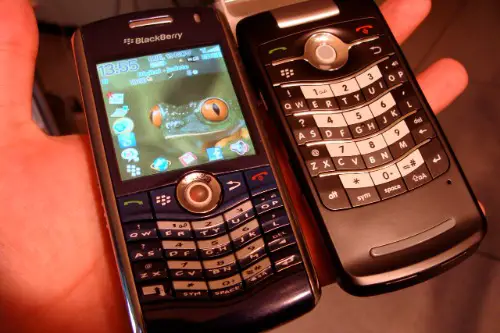
Before smartphones, PDAs like the PalmPilot and BlackBerry were cutting-edge tools for the organized elite. They offered calendars, notes, and even email—miraculous in the late ’90s. But as soon as Apple merged those features into a single touchscreen device, the PDA’s days were numbered. The iPhone made them redundant overnight.
Palm tried to pivot and even partnered with Microsoft, but the market had already moved on. BlackBerry lingered a bit longer, but touchscreens and app ecosystems won the war. The smartphone didn’t just evolve from PDAs—it erased them. It was progress eating its own tail, one swipe at a time.
This post 14 Industries That Invented the Future — Only to Get Wiped Out By It was first published on American Charm.


